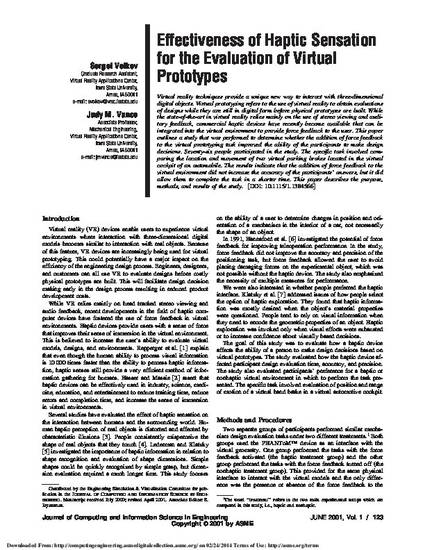
Virtual reality techniques provide a unique new way to interact with three-dimensional digital objects. Virtual prototyping refers to the use of virtual reality to obtain evaluations of designs while they are still in digital form before physical prototypes are built. While the state-of-the-art in virtual reality relies mainly on the use of stereo viewing and auditory feedback, commercial haptic devices have recently become available that can be integrated into the virtual environment to provide force feedback to the user. This paper outlines a study that was performed to determine whether the addition of force feedback to the virtual prototyping task improved the ability of the participants to make design decisions. Seventy-six people participated in the study. The specific task involved comparing the location and movement of two virtual parking brakes located in the virtual cockpit of an automobile. The results indicate that the addition of force feedback to the virtual environment did not increase the accuracy of the participants’ answers, but it did allow them to complete the task in a shorter time. This paper describes the purpose, methods, and results of the study.
Available at: http://works.bepress.com/judy_vance/16/

This article is from Journal of Computing and Information Science in Engineering 1 (2001): 123–128, doi:10.1115/1.1384566. Posted with permission.